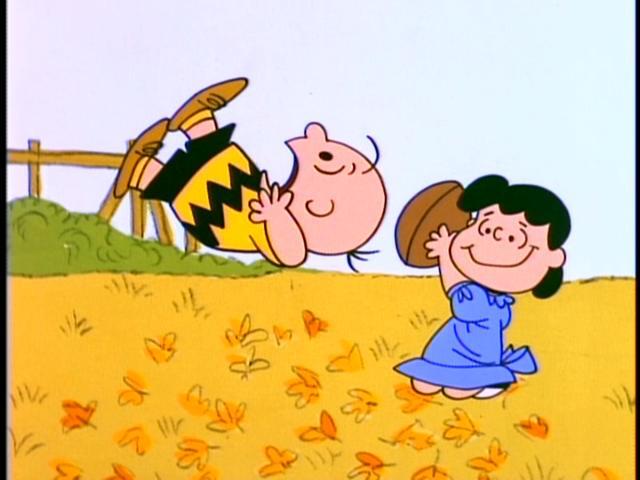
by Philip Yurchuk | Jun 7, 2014 | Career
This morning at Innovate Pasadena I got to see Mark Suster speak on startups. Here’s my report.
Funding
For those looking for funding, he recommends his one coffee per week method. This where you have coffee once per week with someone who can increase your chances of getting funded. His recommendation is to identify VCs in your area who would be a good fit, then find who they have funded. Those are the ones you want to ask out for coffee. Well, the ones who have time for you – you can probably skip the ones running a $1B company. Tell them about what you are doing and ask for honest feedback. If the entrepreneurs like you and value you what you are doing, they will pass your information along to VC. Emailing the VC directly is right out.
The Team
It seems I’m not the only one who has seen crazy startup teams in the LA/OC area. By crazy, I mean they have 5 managers and nobody to build the product. I get approached by people like this all the time and my thought is that they’ve already sliced up the equity 5 ways, so I’ll be working like a slave for a fraction of the company. No thank you, best of luck.
Mark believes this happens in LA because individuals are afraid to fail. In a group, it’s not “I failed,” it’s “we failed.” Safety in numbers. Mark’s ideal team is 3-5 engineers and a product manager, the latter of which is probably the CEO. If you’ve read Paul Graham, Joel Spolsky, or Founders at Work, you’ve heard this before.
He also says that sales people are coin operated, meaning they’re mercenaries. Good ones are worth a certain salary and if you don’t have the sales to support it, you’ll pay them outright or they’ll leave. For startups, he recommends instead an evangelical business development person.
He also recommends you don’t outsource your development. Now, I run a company that builds software for other companies, including startups. So of course I believe it depends on your product. He recommends that if you can’t convince developers to work for you for free (and that is exceedingly hard in this market), you try to hire them perhaps off Elance or Odesk. That’s one route, if you are confident in your ability to qualify developers and manage them directly, but that’s much harder than it sounds. In fact, one piece of advice I’ve heard lately is firing bad hires quickly. And I’d say that’s in part due to not having the ability to interview and qualify them.
I humbly suggest that – if done correctly – it’s quite possible to outsource the MVP and bring development in-house when revenue can support it. Some, like Klout and Fab, have taken it much further. That said, if you’re going for VC funding, not having a technical cofounder can be an impediment you’ll need traction to overcome.
Is It In You?
Mark got into the slog of being an entrepreneur and referenced his most popular blog post. It’s not nearly as glamorous as the press makes it out to be. I think the best analogy for this is it’s like being a professional athlete. Maybe .02% of the population is cut out for it. You have to ask yourself, are you really a Pau Gasol? Because this is the majors. It’s an incredible amount of work and it doesn’t slow down until you succeed or fail.
Speaking of which, he addresses age discrimination. It’s absolutely rampant in the VC world. He’s not a part of it; he’s invested in those in their late 30s and 40s. Those are the people most VCs see not as experienced, but as old.
Why is that? It’s their goal: a billion dollar company. That takes 8-11 years to build, going at a full startup pace. A lot of life changes can happen in that time. You sure aren’t getting more energetic as the years go by. Your personal and financial responsibility is probably increasing over time. While he isn’t an ageist, he does say that the earlier you can do this, the better.
Or don’t. One can take 8-11 years to grow a damn fine business while actually enjoying life. This is absolutely a reasonable thing to do. In fact, one could argue that a VC-backed startup is completely unreasonable – practically insane – way to live your life.
Further Watching
Mark recommended the following two interviews for further startup education:
Mark interviews Bill Gross, founder of Idealab
Mark discusses “entrepreneur math” with Kelly Hwang

by Philip Yurchuk | Mar 21, 2014 | Life Hacks
I’ve just started experimenting with an “information diet” and the effect on my productivity has been enormously positive. This concept was invented years ago and at the time I thought, “sure, I guess some people need that.” But not mois! However, after years of avoiding it, I’ve recently joined Twitter, and while not an enormous time suck on its own, it caused me to look at everything I do that isn’t making progress toward my goals. As I’m in the process of expanding my consulting practice into something serious, I really want to focus. So here’s what I have cut out on my diet days:
- Facebook
- LinkedIn
- Twitter
- News sites (including Hacker News)
- Wikipedia
- IMDB
- Yelp
- Web stats – Google Analytics & Webmaster Tools, WordPress Stats, etc.
It kind of pains me to write that out because it really highlights the unimportant stuff I’ve been doing every day. Yes, social media is part of marketing a business, but there’s a lot of nonessential distractions that happen while you use those sites.
So what was allowed?
- Actual work
- Books that make me better at my job
- Urgent & important chores (walking the dog, cooking, laundry)
- TV while eating
I knew it would be tough, and easy to put off, but thought that I should be able to do it for one day. I’m giving up sweets for Lent, which I do every year and never find it to be a problem, other than not getting cake on my birthday. However, that’s a unique situation. I’m not a terribly religious man (I can’t remember the last time I went to church), but when you promise God you’re not going to do something, you just don’t do it.
Heck, if I promise just about anyone anything, I follow through. But when you promise yourself something, you really have nobody to hold you accountable. And I was worried this was something I could put off indefinitely, so I used an oft recommended trick, which is to start now, not tomorrow. I’m guessing it works because there are many tomorrows, but only one “now.”
Here’s the problem: I was watching The Wolf of Wall Street when I thought of this. That itself wasn’t the problem; I wasn’t telling myself I had to shut off the movie. The problem was that as soon as it ended, I desperately wanted to hit Wikipedia and read about Jordan Belfort. What an outrageous story! What parts were true? This lasted for a solid 36 hours and I probably should have called my doctor. But as a fountain of useless knowledge, this was precisely the type of thing I would learn and retain for years, displacing some equally unimportant fact, like the value of pi to 2 decimal places.
Here’s the remarkable thing: I still don’t know any more than Martin Scorsese saw fit to tell me. As far as I know, the whole thing’s true. Because the day after my “fast,” every time I used a junk food site, I was acutely aware I was not making optimal use of my time. I felt I had to be careful. It was kind of like when I pass an awesome ice cream shop after hitting the gym. “Hell no! I am not destroying the progress I just made.”
And after a couple days of junk info, today I went back on the diet. It was a lot easier, and I feel good about it. It reminds me a lot of a low/slow carb diet. Tough at first, but when you see progress you want to keep going. Only I’m getting results way faster than I do on low carb. It seems like something I could do more than 50% of the time. Which is definitely what I should do.

by Philip Yurchuk | Feb 20, 2014 | Ecommerce, Marketing
I thought of titling this “Image Carousels Are Evil,” but that sounded too melodramatic. But think back to your school days. Ever been reading a book and have some kid shut it on you or swipe the pages so you lose your place? That’s what reading carousel content feels like to me. Only they keep doing it. And it’s their book, which they spent a lot of time writing, and then asked me to read it. It just doesn’t make any sense. Why bully your customers?
I’m not the only one who feels this way. Jared Smith built ShouldIUseACarousel? to bring attention to this issue. It is an entertaining, educational look at why they don’t work. Jared’s initial issue is accessibility, which is clearly important, but there is also the conversion and effectiveness issue.
I’m going to blatantly steal a couple of his references because you might miss them (hey, they’re in a carousel) and they’re important.
Erik Runyon shows that everyone clicks on the first image. If you picked a carousel because you believe all of its content is equally important, you’re not treating them equally unless the carousel is randomized for each visit.
Jakob Nielsen, usability consultant to the stars, writes how the user fails at their task when presented with a carousel. Usability is so insanely important in ecommerce because it tests whether the customer can buy something from you. That’s the whole point of your site!
In talking with clients and ecommerce folks, it’s clear at this point that people want carousels (AKA image sliders) because other sites use them. It’s trading on social proof. But carousels started because these popular sites designed by committee, beholden to politics and hostage to infighting between multiple stakeholders who all demand their content be “above the fold.” That’s not you. And in fact, it’s no longer them, either. The big sites got smart and now have conversion optimizers on staff who can prove carousels don’t work. They will make my point for me.
Back in the Web 1.0 days, the aforementioned Jakob Nielsen gave some great advice: copy Yahoo and Amazon. By this, he meant you should follow the practices set by the companies who are teaching people what to expect on the web. That lesson still applies.
I don’t know if Amazon is still a good example to follow, as they are so big they can break rules or make new ones. They even force me to make the distinction that I’m really rallying against auto-forwarding, because they have two carousels on their home page and neither auto-forward. Carousels that are entirely under user control are fine, but visitors are unlikely to see content other than the default.
Other than Amazon, there are plenty of billion dollar companies with crack optimization teams. Macy’s has a tiny rotating image at the top that you can safely ignore; the rest is composed of static content areas. Nordstrom and Target are all static content. Anthropologie has some sparkly decorative animation, but it’s mostly an image map.
All of those companies realize that above the fold isn’t important anymore. You’re going to scroll down. Part of this is because most home page views are direct visits – you typed the URL into your browser, so they’re not worried about bouncing like they would with a landing page from an ad or search result link.
The lesson, like always, is to hypothesize what content will have the biggest impact on profit, then test it against other options and measure the results. When you realize that’s your mission, you drop the carousel quickly because they are too hard to test.
If someone has put a gun to your head and forced you to use a carousel, please use one that does the following:
- Automatically pauses on hover. Mouse pointer movement correlates highly with eye tracking, so the pointer on the image means they are reading it, or – crazy thought – are getting ready to click. Don’t yank it away like Lucy with a football.
- Stop rotating content the moment a carousel navigation button – side or bottom – is clicked. Same reason as above.
But really, just stop. In fact, remove any animation or movement from a page you want me to read. As Jared Smith says, it’s the blink tag all over again.
by Philip Yurchuk | Feb 14, 2014 | Marketing
Most people know that buying likes from click farms is a waste of money. After watching the video below, I learned that buying legitimate ads from Facebook is almost as bad. It is filled with click fraud (fake likes), which destroys legitimate engagement due to FB’s own engagement detection algorithms. The video does a fantastic job explaining this and backing it up with evidence.
(Disclaimer: I can’t take credit for this video or the research. Wish I could.)

by Philip Yurchuk | Feb 10, 2014 | Humor, Marketing
Marketing is hard. It certainly doesn’t help when all these stupid jerks come to your site, check it out, and then take no action. I mean, you made it very clear what they should be doing on your site, but they just don’t follow instructions. Pisses you off, right?
Well, some people who are just as angry at their customers have found a way to express this: calls to action that clearly highlight how stupid potential customers are being when they don’t buy what you’re selling. I’ve come up with some of my own examples that you are free to use.


(more…)



